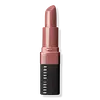What's inside
What's inside
 Key Ingredients
Key Ingredients

 Benefits
Benefits

 Concerns
Concerns

 Ingredients Side-by-side
Ingredients Side-by-side

Dimethicone
EmollientMethyl Trimethicone
Skin ConditioningPolyglyceryl-2 Triisostearate
EmulsifyingDimethicone Crosspolymer
Emulsion StabilisingDimethicone/Vinyl Dimethicone Crosspolymer
Skin ConditioningIsododecane
Emollient1,2-Hexanediol
Skin ConditioningDisteardimonium Hectorite
StabilisingPhenoxyethanol
PreservativePEG-10 Dimethicone
Skin ConditioningTocopheryl Acetate
AntioxidantPropylene Carbonate
SolventParfum
MaskingLinalool
PerfumingHelianthus Annuus Seed Oil
EmollientGardenia Florida Fruit Extract
Skin ConditioningNelumbo Nucifera Flower Extract
Skin ConditioningNymphaea Odorata Root Extract
RefreshingCI 45410
Cosmetic ColorantCI 15850
Cosmetic ColorantCI 77891
Cosmetic ColorantCI 42090
Cosmetic ColorantCI 77491
Cosmetic ColorantDimethicone, Methyl Trimethicone, Polyglyceryl-2 Triisostearate, Dimethicone Crosspolymer, Dimethicone/Vinyl Dimethicone Crosspolymer, Isododecane, 1,2-Hexanediol, Disteardimonium Hectorite, Phenoxyethanol, PEG-10 Dimethicone, Tocopheryl Acetate, Propylene Carbonate, Parfum, Linalool, Helianthus Annuus Seed Oil, Gardenia Florida Fruit Extract, Nelumbo Nucifera Flower Extract, Nymphaea Odorata Root Extract, CI 45410, CI 15850, CI 77891, CI 42090, CI 77491
Ricinus Communis Seed Oil
MaskingCaprylic/Capric Triglyceride
MaskingIsopropyl Lanolate
EmollientEuphorbia Cerifera Wax
Cetyl Lactate
EmollientParaffin
PerfumingNylon-12
Microcrystalline Wax
Emulsion StabilisingTocopherol
AntioxidantAscorbyl Palmitate
AntioxidantEthylhexyl Methoxycinnamate
UV AbsorberLinalool
PerfumingLimonene
PerfumingCitral
PerfumingBenzyl Benzoate
AntimicrobialGeraniol
PerfumingParfum
MaskingMica
Cosmetic ColorantCI 77891
Cosmetic ColorantCI 77491
Cosmetic ColorantCI 77492
Cosmetic ColorantCI 77499
Cosmetic ColorantCI 15985
Cosmetic ColorantCI 15850
Cosmetic ColorantCI 77742
Cosmetic ColorantCI 45410
Cosmetic ColorantCI 42090
Cosmetic ColorantCI 19140
Cosmetic ColorantCI 45380
Cosmetic ColorantCI 75470
Cosmetic ColorantCI 45370
Cosmetic ColorantCI 77163
Cosmetic ColorantRicinus Communis Seed Oil, Caprylic/Capric Triglyceride, Isopropyl Lanolate, Euphorbia Cerifera Wax, Cetyl Lactate, Paraffin, Nylon-12, Microcrystalline Wax, Tocopherol, Ascorbyl Palmitate, Ethylhexyl Methoxycinnamate, Linalool, Limonene, Citral, Benzyl Benzoate, Geraniol, Parfum, Mica, CI 77891, CI 77491, CI 77492, CI 77499, CI 15985, CI 15850, CI 77742, CI 45410, CI 42090, CI 19140, CI 45380, CI 75470, CI 45370, CI 77163
 Reviews
Reviews

Ingredients Explained
These ingredients are found in both products.
Ingredients higher up in an ingredient list are typically present in a larger amount.
Ci 15850 is the pigment color red. It is an azo dye and created synthetically.
Azo dyes need to be thoroughly purified before use. This allows them to be more stable and longer-lasting.
This ingredient is common in foundations, lipsticks, and blushes. This color is described as brown/orangey red.
It has many secondary names such as Red 6 and Red 7. According to a manufacturer, Red 6 usually contains aluminum.
Learn more about CI 15850Ci 42090 is a synthetic dye created from petroleum. It is used to give a bright blue color to cosmetics, medicine, and food.
CI 45410 is a synthetic red-pigment and dye.
It often goes by both Red 28 or Red 27; manufacturers label both ingredients as CI 45410.
This dye is commonly found in makeup because it imparts a vivid color. Some types of this dye change color based on pH level and interaction with moisture:
Your skin has a natural pH of around 4.5 - 5.5.
According to the FDA, CI 45410 is not permitted for use in eye products.
Red 27 is a flourescein dye and commonly used as a fluorescent tracer in medicine.
Learn more about CI 45410Ci 77491 is also hydrated iron III oxide. It's sole purpose is to give a red/pink hue to products.
Iron III oxides are classified as inorganic chemicals for coloring.
Synthetically created Ci 77491 is considered safer than those naturally found. This is because the synthetically created version may contain less impurities. Iron oxides are generally non-toxic and non-allergenic.
Learn more about CI 77491Ci 77891 is a white pigment from Titanium dioxide. It is naturally found in minerals such as rutile and ilmenite.
It's main function is to add a white color to cosmetics. It can also be mixed with other colors to create different shades.
Ci 77891 is commonly found in sunscreens due to its ability to block UV rays.
Learn more about CI 77891Linalool is a fragrance and helps add scent to products. It's derived from common plants such as cinnamon, mint, citrus, and lavender.
Like Limonene, this ingredient oxidizes when exposed to air. Oxidized linalool can cause allergies and skin sensitivity.
This ingredient has a scent that is floral, spicy tropical, and citrus-like.
Learn more about LinaloolParfum is a catch-all term for an ingredient or more that is used to give a scent to products.
Also called "fragrance", this ingredient can be a blend of hundreds of chemicals or plant oils. This means every product with "fragrance" or "parfum" in the ingredients list is a different mixture.
For instance, Habanolide is a proprietary trade name for a specific aroma chemical. When used as a fragrance ingredient in cosmetics, most aroma chemicals fall under the broad labeling category of “FRAGRANCE” or “PARFUM” according to EU and US regulations.
The term 'parfum' or 'fragrance' is not regulated in many countries. In many cases, it is up to the brand to define this term.
For instance, many brands choose to label themselves as "fragrance-free" because they are not using synthetic fragrances. However, their products may still contain ingredients such as essential oils that are considered a fragrance by INCI standards.
One example is Calendula flower extract. Calendula is an essential oil that still imparts a scent or 'fragrance'.
Depending on the blend, the ingredients in the mixture can cause allergies and sensitivities on the skin. Some ingredients that are known EU allergens include linalool and citronellol.
Parfum can also be used to mask or cover an unpleasant scent.
The bottom line is: not all fragrances/parfum/ingredients are created equally. If you are worried about fragrances, we recommend taking a closer look at an ingredient. And of course, we always recommend speaking with a professional.
Learn more about Parfum